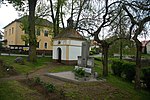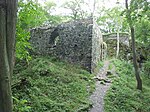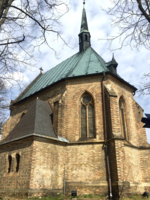Letná Formation
The Letná Formation is a Late Ordovician (Sandbian, or in the regional stratigraphy Berounian) geologic formation of the Prague Basin, Bohemian Massif in the Czech Republic. The formation crops out in the Czech capital, more specifically at Letná Hill, after which the formation is named. The type locality is located at Malá Strana, Holešovice district.The more than 600 metres (2,000 ft) thick formation comprises a rhythmic alternation of sandstones (greywackes and subgreywackes), quartzites, intercalated with siltstones and shales deposited in marine flysch-like environments. Because of the excellent preservation, including gut remains, of a wide assemblage of early Paleozoic taxa in which trilobites dominate, the formation, which is lean in fossils in many areas but exceptionally rich in what has been interpreted as storm beds, has been designated a Konservat-Lagerstätte.
Excerpt from the Wikipedia article Letná Formation (License: CC BY-SA 3.0, Authors).Letná Formation
Na Zámku, okres Beroun
Geographical coordinates (GPS) Address Nearby Places Show on map
Geographical coordinates (GPS)
| Latitude | Longitude |
|---|---|
| N 50 ° | E 14 ° |
Address
Kriegsdenkmal 1866
Na Zámku
267 05 okres Beroun, Nižbor
Central Bohemia, Czechia
Open on Google Maps











